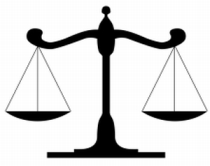The Double Entry Accounting System:
Definition and Example
Lesson One: The Double Entry Accounting System (this lesson)
Lesson Two: The Basic Accounting Equation: Another Viewpoint
Lesson Three: Debits and Credits: What They Really Mean
Lesson Four: Owner's Equity Journal Entry (Capital investment)
Lesson Five: Bank Loan Journal Entry
Lesson Six: Journal Entry for Asset Purchase
Lesson Seven: Journal Entry for Drawings (Withdrawing cash from the business)
Lesson Eight: Journal Entry for Income (Cash example)
Lesson Nine: Accrued Income Journal Entry
Lesson Ten: Journal Entry: Cash Received From a Debtor / Accounts Receivable
Lesson Eleven: Expense Journal Entry (Cash expense)
Lesson Twelve: Accounts Payable Journal Entries
Lesson Thirteen: Loan Repayment Journal Entry
WARNING: If you're really struggling with double entry accounting and you've come straight to this page, you might find it a little tricky... The lessons on this site build up step-by-step, so if you haven't reviewed any of the earlier lessons, you may want to do so first.
Start with the previous section on Basic Accounting Transactions. In those lessons you'll go through each type of transaction and gain a thorough understanding of how each transaction affects the basic accounting equation. Revising these earlier lessons should make your ongoing studies much easier.
Be sure to check your understanding of this lesson by taking the quiz in the Test Yourself! section further below. And right at the bottom of the page, you can find more questions on the topic submitted by fellow students.
What is the Double-Entry System of Accounting?
In one of our first lessons we asked the question, What is Accounting? and learned that it is a system of recording information about a business.
Well, this system has a specific name.
That name is the double entry system of accounting.
Double entry means two entries.
And we literally make two entries - for every single transaction.
Why are there two entries instead of just one?
You may not be surprised by this, but it's all based on our basic accounting equation:

Just like any equation, the basic accounting equation has two sides.
There's assets on the left side. And owners equity + liabilities on the right side.
When a transaction takes place, it doesn't just affect the one side - it usually affects both.
Or, to put it more accurately, a transaction always affects two accounts.
A Simple Double Entry Accounting Example
Here's a simple example of a double entry to illustrate how this works:
ABC Business takes out a loan of $50,000 from the bank.
Here is what the double entry, called a journal entry, would look like for this:

I'll explain exactly how I got to this journal entry below.
First, let's look at the transaction and its impact on the accounting equation.
This transaction results in more assets (in the form of cash for the business) and also more liabilities (in the form of the loan).


Now, we could just make a single entry and record that we received more cash.
But where did this cash come from?
If we didn't make any further entry, we'd have to guess later on when we looked at our records. We'd just see a record of receiving $50,000 cash.
Maybe the $50,000 cash came from income we made? Or maybe it was additional capital invested by the owner?

We simply wouldn't have a good record of what happened.
So instead of just recording the increase of our cash, we also record a second entry about how the cash came about or where it came from - a loan.
Looking back at our accounting equation above, the left side increases by $50,000 and the right side also increases by that amount.
The increase to that left side (assets) is one entry.
And the increase to the right side (liabilities) is the second entry.
OR...
The entry to increase bank (or "cash") is one account and one entry.
And the entry to increase loan (a liability) is a second account and a second entry.
Recording the Journal Entry (Debit and Credit)
The double entries we make have a specific name. You've probably heard of them before. One of these entries is called a debit and the other is called a credit.
Here is the double entry again for the above example:

DR is an abbreviation for the Latin word debere ("to owe") or for "Debit Record."
It indicates a DEBIT ENTRY.
CR is an abbreviation for the Latin word credere ("to entrust to another") or for "Credit Record."
It indicates a CREDIT ENTRY.
The debit to Bank simply indicates that our Bank account is increasing.
And the credit to the Loan account (a liability account) means this is also increasing.
Test Yourself!
Before you start, I would recommend to time yourself to make sure that you not only get the questions right but are completing them at the right speed.
Difficulty Rating:
Beginner
Quiz length:
3 questions
Time limit:
5 minutes
Important: The solution sheet on the following page only shows the solutions and not whether you got each of the questions right or wrong. So before you start, get yourself a piece of paper and a pen to write down your answers. Once you're done with the quiz and writing down your answers, click the Check Your Answers button at the bottom and you'll be taken to our page of solutions.
Good luck!
Moving Forward
For a full, detailed tutorial on how to figure out which account is debited and which is credited for any transaction, see our mind-blowing tutorial Debits and Credits: What They Really Mean.
After that we'll go through each of the transactions we went over previously with our sample business, George's Catering, but this time we'll delve deeper and go over the exact debit and credit entry for each one.
But before all of that, in the 2nd lesson in this section, we're going to take a look at an alternative viewpoint of the basic accounting equation. This short but powerful lesson should provide you with even greater certainty on the accounting equation and give you a better understanding of the two entries in our double entry accounting system.
So, what are you waiting for? Time to get stuck into double entry accounting and the debit and credit entries.
Click the links in this section to go through each of the lessons.
Stay up to date with ABfS!
Follow us on Facebook:
Return from Double Entry Accounting to the Home Page
Lesson One: The Double Entry Accounting System (this lesson)
Lesson Two: The Basic Accounting Equation: Another Viewpoint
Lesson Three: Debits and Credits: What They Really Mean
Lesson Four: Owner's Equity Journal Entry (Capital investment)
Lesson Five: Bank Loan Journal Entry
Lesson Six: Journal Entry for Asset Purchase
Lesson Seven: Journal Entry for Drawings (Withdrawing cash from the business)
Lesson Eight: Journal Entry for Income (Cash example)
Lesson Nine: Accrued Income Journal Entry
Lesson Ten: Journal Entry: Cash Received From a Debtor / Accounts Receivable
Lesson Eleven: Expense Journal Entry (Cash expense)
Lesson Twelve: Accounts Payable Journal Entries
Lesson Thirteen: Loan Repayment Journal Entry
Questions Relating to This Lesson
Click below to see questions and exercises on this same topic from other visitors to this page... (if there is no published solution to the question/exercise, then try and solve it yourself)
What is the Journal Entry for a Check Received?
Q: What is the journal entry for the following:
Received check from a debtor Rs 100,000. (this means 100,000 rupees - the rupee is the currency …
Basic Journal Entry Question:
Capital + Purchase Returns
Q: Write the journal entries for the following transactions:
Jan 1 Shayam commenced business with cash $15,000.
Jan 10 Returned goods to Krishna …
Double Entry Accounting
Q: What is double entry accounting and who introduced double entry?
A: The answer to your first question is fully explained in the lessons in the …
Accounts Receivable vs Accounts Payable
Q: What's the difference between Accounts Receivable vs. Accounts Payable?
A: Thanks for your question Tarig.
Let's see what these two terms …
© Copyright 2009-2023 Michael Celender. All Rights Reserved.
Click here for Privacy Policy.





Comments
Have your say about what you just read! Leave me a comment in the box below.